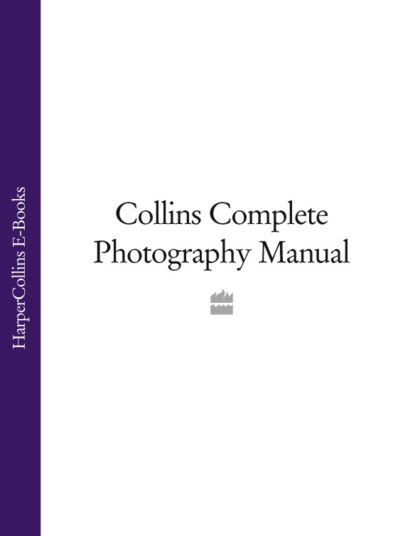По всем вопросам обращайтесь на: info@litportal.ru
(©) 2003-2024.
✖
Collins Complete Photography Manual
Автор
Год написания книги
2018
Настройки чтения
Размер шрифта
Высота строк
Поля
Broadly speaking, you need two types of software for digital photography: software for organizing and browsing your photos, and software for editing and enhancing them. Sometimes a single program will do both. Even then, though, these jobs are usually split into two distinct areas within the program.
In the past, the job of keeping images organized ha been largely overlooked as users concentrate on th more glamorous aspects of image enhancement and manipulation. However, software publishers and photographers are now realizing the growing importance of image organization and this now forms a key part of most digital photography applications.
Image organizing software
Digital photography software can come from a number of different sources. Most digital cameras are supplied with programs to get you started. Niko cameras come with Picture Project, for example, which provides basic image organizing and enhancement tools. Kodak provides similar EasyShare software with its cameras, while HP cameras come with ImageZone.
Google’s free Picasa 2 application is a very interesting alternative. It is exceptionally fast at finding and browsing digital photos, and incorporates editing tools which are both easy to use and highly effective. If you are on a budget, thi: is probably the best option to start with.
Even basic image organizing programs such as those described above will make a big difference to the way you manage your photographs, though serious or professional photographers may eventually need to move up to a professional cataloguing application offering greater versatility
UNDERSTANDING PLUG-INS
Many of the special effects you can create in image editing programs are achieved with ‘plug-ins’. These are small software ‘modules’ which are not part of the main program, but which can be invoked from within it just as if they were. These plug-ins are usually found on a’Filters’ or’Effects’ menu. The majority of the filters in Photoshop and Elements, for example, are plug-ins. These are supplied with the software, but many third-party publishers produce specialized plug-ins for reducing digital noise, improved sharpening of fine detail or creative ‘art’ effects. These are bought separately but, once they are installed, they appear on the image editor’s Filters or Effects menu like all the rest.
Similarly, while the image editing tools in the programs that come bundled with cameras are adequate for fixing everyday photo errors, if you want to experiment with more advanced digital effects you will need to buy a more sophisticated image editing program. The best advice is to stick with the software provided until it becomes obvious that it can no longer do what you want. By then it will be clearer exactly what you do need.
Dedicated image editing software
There are many separate image editing programs to choose from. The most famous (and the most powerful) is Adobe Photoshop, but it is expensive, complicated and has features which many digital photographers will simply never use.
Adobe Photoshop Elements is very much cheaper, easier to use and equipped with most of the tools photographers will need. It comes with photo organizing software which is a step up from that you get free with the camera, as well. Other notable programs in this price bracket include Corel Paint Shop Pro and Ulead PhotoImpact.
Printers
Looking at pictures on a computer screen still isn’t quite the same as holding an actual print in your hand. For this reason, most digital photographers will want a home printer at some time.
Photo printers
Most photo printers use ‘inkjet’ technology. Tiny nozzles on a moving print head squirt dots of ink on to the paper as it passes through the printer. The dots are so small that they merge to form the appearance of a smooth-toned image. Some smaller printers designed for 6″ × 4″ snapshots alone use ‘dye-sublimation’ technology. In this case, the inks are supplied on a ribbon the same width as the paper. The inks are heated into a gas and permeate the upper layers of the paper.
There is little difference to choose between the two types in terms of picture quality. Inkjet prints may prove fractionally sharper, but dye-sublimation prints are dry as they emerge and are therefore physically a little more resilient.
These postcard-sized printers are inexpensive and very popular. Many contain built-in memory card readers so that you can print digital photos without a computer. The makers have adopted fixed-price ‘photo packs’ containing enough inkand paperfora specified number of prints, so that you can easily work out what the costs are per print.
THE MORE INKS THE BETTER?
Everyday inkjet printers use four inks – cyan, magenta, yellow and black. Photo printers typically use six, introducing extra ‘light cyan’ and ‘light magenta’ inks. The greater number of inks reduces the faint ‘dottiness’that ordinary printers can sometimes produce when printing photos.
Some more sophisticated models may use as many as eight or even nine inks. These are designed to extend the colour range, or ‘gamut’ that the printer can produce. These extra inks can improve the print quality, but they also make printers expensive and complexto maintain. However, advances in inkjet printing technology are allowing manufacturers to move back to simpler systems, and many ‘photo’ printers now produce superb print quality with just four inks.
Larger printers
Larger A4 printers are more versatile. With a couple of rare exceptions, these all use inkjet technology. Many A4 ‘photo’ printers include memory card slots, and almost all of them produce excellent print quality every bit as good as that you would expect from a commercial photo laboratory.
If you are interested in exhibiting your work, oryou want to enter competitions at a local camera club, or you simply want to hang big pictures on your wall, you should consider an A3 printer. Perhaps surprisingly, these typically cost more than twice as much as an equivalent A4 model.
Printer manufacturers quote a variety of specifications, butthese don’t necessarily help you to identify the best performers. Resolution figures (in ‘dpi’ – dots per inch) are now so high that they have little practical bearing on the print definition. Ink droplet sizes are now microscopic and, in reality, also have little actual bearing on print quality. Real-world tests in magazines are always a good guide, and they will also be up to date with the latest models and technologies.
PRINT LONGEVITY
In the early days of inkjet photo prints, rapid fadingof images was a problem. Manufacturers have invested heavily in research, and most now quote a print life expectancy in decades or ‘generations’. The important thing to note, however, is that manufacturers have not yet agreed on a standard set of test conditions and, obviously, they rely on ‘accelerated aging’ processes to estimate print deterioration.
Nevertheless, prints do now last much longerthan they used to, and quite probably as long as traditional photographic prints kept in the same conditions. However, it is essential to use the printer makers’ own papers and inks, because these have been specially tuned and matched to provide this longevity.
Storage
When you take a digital photo it is stored by the camera on a memory card. Memory cards have limited capacity and are best treated as purely temporary storage until you have the opportunity to transfer the photos to your computer.
The hard disk inside a computer has a much higher capacity and is perfectly suited to long-term storage of your growing photo collection. A 256Mb memory card may store around 100 good quality photos, but an 80Gb hard disk, which is quite modest by today’s standards, could store as many as 30,000.
These figures assume that each photograph takes up around 2.5Mb of space. This is a typical size for photos taken in the commonly used JPEG format. However, if you own a digital SLR and prefer to shoot RAW files, the file sizes will be much larger – anywhere from 5-25Mb, depending on the camera model. Edited versions of your files may also take up a lot more space than the original JPEG photos.
Virtual reality and the need to ‘back up’
Finding space to store your digital photos is not the only issue you need to be aware of. Unlike film, where you always have the original negative to fall back on, digital photos have no physical form. The electronic file on your computer is all you have. If the computer’s hard disk should fail, or if the computer is stolen or damaged, you will lose all your photographs.
This is why it is important to have a system for ‘backing up’ these files. This simply means keeping a copy of your photos on another storage device, preferably in another location, just in case something should happen to your computer.
There are different ways of doing this. Some photographers find the simplest method is to save their photos on CD or DVD as they go along. This is easiest if you have a routine. For example, your routine might be to first copy the photos from the camera to your computer, then copy them from the computer on to CD, then delete them from the camera.
Alternatively, you can use a plug-in (‘external’) hard disk drive and special backup software to maintain an up-to-date copy of your photo collection. This will serve as a generally reliable and relatively safe archive.
STORING IMAGES WHEN ON LOCATION
Storage can become a problem if you are away from your computer for any length of time, perhaps on vacation or on a business trip. It is no longer possible to transfer pictures to your computer and erase your memory card to make room for more. The simplest solution is to buy a larger memory card because prices have fallen considerably and even high-capacity cards of 1Gb and more are now inexpensive. Alternatively, you could invest in a portable storage device. These contain hard disks for bulk storage, but are battery-powered and have memory card slots so that transferring photos to the hard disk is easy. Finally, many stores have photo labs which can transfer pictures from your memory cards to a CD.
Film-based Cameras
Digital cameras now easily outsell film cameras, but some photographers still prefer to use film because it offers advantages in some specific circumstances. Film cameras come in a number of types which are aimed at different kinds of photographer.
35mm and instant cameras
Film cameras are categorized by ‘format’ – the size and type of film used. The most popular type is 35mm film. There are many 35mm compact cameras and SLRs on the second-hand market, but they have largely disappeared from the dealers’ shelves and the manufacturers’ catalogues as digital compacts and SLRs have taken over, offering very similar levels of picture quality.
However, 35mm ‘single use’ cameras remain popular. They cost little more than a roll of 35mm film, and they are ideal for school trips or other projects where the camera may be damaged or lost.
Instant cameras can also be useful. The prints they produce are small and comparatively expensive, but the ability to produce a print on the spot has both novelty and practical value.
Medium and large format film cameras
‘Medium-format’ film cameras use larger film which comes on rolls. The largerfilm area produces much better quality than 35mm film, ideal for commercial or advertising work. Nevertheless, medium-format cameras have largely died out, too, as professional digital SLRs can now achieve similar levels of quality. ‘Large-format’ cameras use single sheets of film usually measuring 5″ × 4″, though some cameras may use sheets as large as 10″ × 8″. These produce superb picture quality and are used for calendars, posters and other large-scale displays. These cameras are still popular amongst landscape photographers due to the fact that although they are slow to set up, they are comparatively light – and no digital camera can yet match the level of quality of a large-format film camera.
Why film cameras remain popular
Few studio-based professional photographers now use film cameras because the ability to check digital images on the spot, and the low running costs (the only cost is printing the pictures you select) are impossible to ignore. Why spend a fortune on films and processing, as in the past, when digital image quality is – in the main – just as good and the whole business of getting pictures into a finished form is so much quicker and easier with a digital camera? Another consideration is that professional photographers’ clients are increasingly unwilling to accept the additional material costs that come with traditional film photography.
Having said all that, many amateur photographers and artists are currently re-discovering film photography. This is chiefly because film produces images with subtly different characteristics, and the longer chemical processes involved in developing films and producing prints encourage a more deliberate and considered approach to picture taking.











